-
 Bitcoin
Bitcoin $105,615.5101
-1.70% -
 Ethereum
Ethereum $2,405.4595
-3.56% -
 Tether USDt
Tether USDt $1.0001
-0.02% -
 XRP
XRP $2.1728
-3.41% -
 BNB
BNB $646.9733
-1.79% -
 Solana
Solana $147.5744
-4.78% -
 USDC
USDC $0.9999
-0.01% -
 TRON
TRON $0.2797
-0.09% -
 Dogecoin
Dogecoin $0.1584
-4.51% -
 Cardano
Cardano $0.5427
-5.54% -
 Hyperliquid
Hyperliquid $37.0745
-6.61% -
 Bitcoin Cash
Bitcoin Cash $501.6174
-3.46% -
 Sui
Sui $2.6807
-3.86% -
 Chainlink
Chainlink $12.8618
-3.85% -
 UNUS SED LEO
UNUS SED LEO $8.9213
-1.73% -
 Avalanche
Avalanche $17.1447
-4.67% -
 Stellar
Stellar $0.2267
-5.16% -
 Toncoin
Toncoin $2.7869
-3.99% -
 Shiba Inu
Shiba Inu $0.0...01123
-2.11% -
 Litecoin
Litecoin $83.6709
-3.55% -
 Hedera
Hedera $0.1444
-4.30% -
 Monero
Monero $310.7502
-3.68% -
 Dai
Dai $1.0000
0.01% -
 Ethena USDe
Ethena USDe $1.0000
-0.01% -
 Polkadot
Polkadot $3.2760
-4.00% -
 Bitget Token
Bitget Token $4.4537
-1.97% -
 Uniswap
Uniswap $6.5603
-8.33% -
 Aave
Aave $260.3777
-5.62% -
 Pepe
Pepe $0.0...09300
-5.00% -
 Pi
Pi $0.4860
-3.15%
What is Byzantine Fault Tolerance? How does it solve the problem of node failure?
Byzantine Fault Tolerance (BFT) secures distributed systems, like cryptocurrencies, by ensuring consensus even with malicious or failed nodes. Complex algorithms with multiple communication rounds achieve this, though implementations vary in security, performance, and complexity.
Mar 14, 2025 at 04:56 pm
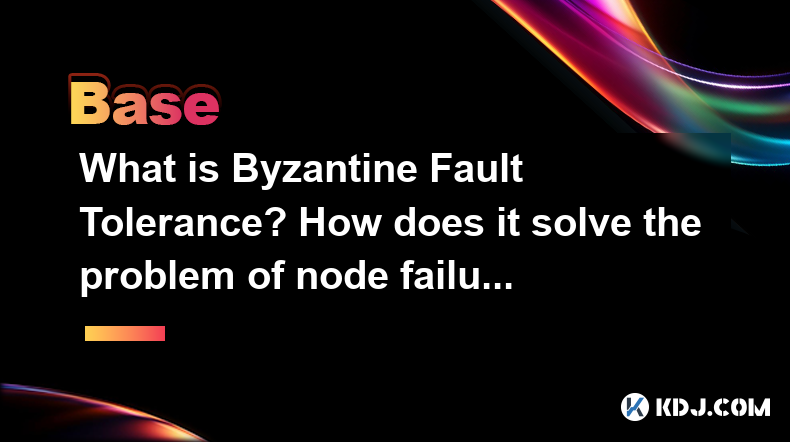
Key Points:
- Byzantine Fault Tolerance (BFT) is a crucial mechanism ensuring the reliability of distributed systems, especially in cryptocurrencies.
- It addresses the challenge of maintaining consensus even when some nodes in the network behave maliciously or fail.
- BFT algorithms achieve consensus through complex protocols involving multiple communication rounds and validation steps.
- Practical BFT implementations vary, each with its own trade-offs between security, performance, and complexity.
- Understanding BFT is crucial for grasping the security and functionality of many blockchain networks.
What is Byzantine Fault Tolerance?
Byzantine Fault Tolerance (BFT) is a crucial concept in distributed systems, particularly relevant to cryptocurrencies. It's a method designed to ensure a system can continue functioning correctly even if some of its components (nodes) fail or act maliciously. This "malicious" behavior could involve sending incorrect information, refusing to participate, or even actively trying to sabotage the system. Unlike simple node failures, Byzantine faults are more complex and harder to manage. They require robust mechanisms to maintain system integrity.
How Does BFT Solve the Problem of Node Failure?
BFT doesn't simply tolerate node failures; it actively works to prevent them from compromising the overall system's consistency and reliability. It achieves this through sophisticated algorithms that involve multiple rounds of communication and validation among the participating nodes. These algorithms ensure that a consensus is reached, even if a significant portion of the nodes are faulty or malicious. The core principle is to design a system where honest nodes can identify and disregard the misleading information provided by faulty nodes.
Different Approaches to Achieving BFT:
There isn't one single solution for achieving BFT. Several algorithms and protocols have been developed, each with its strengths and weaknesses. Some common approaches include:
- Practical Byzantine Fault Tolerance (PBFT): A widely known algorithm that uses a primary node to coordinate consensus among replicas. It's relatively simple to understand but can be slow for large networks.
- HotStuff: A more recent algorithm that aims to improve the efficiency of PBFT by using a leader election mechanism and reducing communication overhead. It's gaining popularity for its scalability.
- Tendermint: A consensus algorithm designed for blockchain applications. It uses a variation of BFT to achieve high throughput and fault tolerance. It prioritizes practical implementation over theoretical optimality.
The Role of Communication Rounds in BFT:
BFT algorithms typically involve multiple communication rounds between nodes. In each round, nodes exchange information, verify data, and reach a consensus on the validity of transactions or state updates. The number of rounds needed depends on the specific algorithm and the number of faulty nodes the system needs to tolerate. More rounds generally increase the security but also reduce efficiency.
- Round 1: Proposal: A node proposes a new state or transaction.
- Round 2: Pre-prepare: Nodes verify the proposal.
- Round 3: Prepare: Nodes commit to the proposal.
- Round 4: Commit: Nodes finalize the transaction.
Challenges and Trade-offs in BFT Implementations:
Implementing BFT comes with challenges. The complexity of the algorithms can be significant, especially when dealing with a large number of nodes. There are also trade-offs between security, performance, and scalability. Increasing the fault tolerance (the number of faulty nodes the system can handle) often comes at the cost of reduced throughput and increased latency.
- Communication Overhead: The exchange of messages between nodes can create a significant communication overhead, especially in large networks.
- Computational Complexity: Verifying the validity of messages and reaching consensus requires substantial computational resources.
- Scalability: Some BFT algorithms struggle to scale efficiently to very large networks.
BFT and Blockchain Technology:
BFT is crucial for the security and reliability of many blockchain networks. It ensures that transactions are processed consistently across the network, even if some nodes are compromised. The choice of BFT algorithm can significantly influence the performance and scalability of a blockchain. Different blockchains utilize different approaches to achieving consensus.
BFT's Impact on Cryptocurrency Security:
BFT's importance in the cryptocurrency world can't be overstated. It underpins the trust and security of many digital currencies by preventing malicious actors from manipulating the system's state. Without BFT, or a similar mechanism, the entire concept of a decentralized, secure cryptocurrency would be severely compromised. It ensures the integrity of transactions and the overall system's stability.
Common Questions and Answers:
Q: What is the difference between BFT and simple fault tolerance?
A: Simple fault tolerance can handle node failures where the nodes simply stop functioning. BFT goes further, addressing malicious behavior where nodes actively try to disrupt the system by sending false information.
Q: How does BFT handle a majority of malicious nodes?
A: The effectiveness of BFT depends on the specific algorithm and the proportion of malicious nodes. Most BFT algorithms require a significant minority of honest nodes to ensure consensus. If malicious nodes exceed a certain threshold (often 1/3), the system may become vulnerable.
Q: Is BFT always the best solution for distributed consensus?
A: No, BFT is computationally expensive. Other consensus mechanisms like Proof-of-Work or Proof-of-Stake are used where performance and scalability are prioritized over the absolute resilience provided by BFT, accepting a lower level of fault tolerance in exchange. The best solution depends on the specific application and its requirements.
Q: Can BFT be used outside of cryptocurrencies?
A: Yes, BFT is a general concept applicable to any distributed system requiring high reliability and security. It finds applications in various fields beyond cryptocurrencies, including cloud computing, sensor networks, and financial systems.
Disclaimer:info@kdj.com
The information provided is not trading advice. kdj.com does not assume any responsibility for any investments made based on the information provided in this article. Cryptocurrencies are highly volatile and it is highly recommended that you invest with caution after thorough research!
If you believe that the content used on this website infringes your copyright, please contact us immediately (info@kdj.com) and we will delete it promptly.
- Michael Saylor, Bitcoin, and $500 Million: A Winning Strategy?
- 2025-07-02 08:30:12
- XRP, Cloud Mining, and the 2025 Market: A New Yorker's Take
- 2025-07-02 08:30:12
- Arctic Pablo Coin: Is This Meme Coin the Key to 100x ROI Investing?
- 2025-07-02 08:50:12
- Base's On-Chain Narrative: A BitMart Research Deep Dive
- 2025-07-02 08:50:12
- Crypto Rollercoaster: Bitcoin, Altcoins, and the Wild Ride Ahead
- 2025-07-02 07:10:16
- Meme Coins Mania: Arctic Pablo Leads the New Crypto Pack
- 2025-07-02 06:30:11
Related knowledge
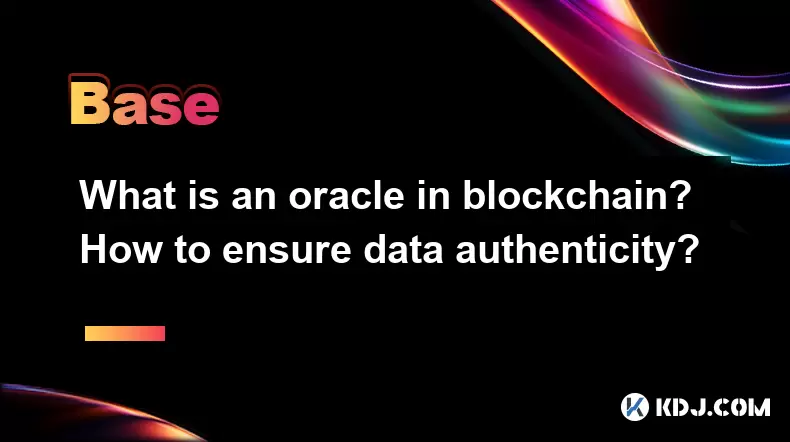
What is an oracle in blockchain? How to ensure data authenticity?
Jun 19,2025 at 08:49pm
Understanding the Role of an Oracle in BlockchainIn the context of blockchain technology, an oracle serves as a bridge between the blockchain and external data sources. While blockchains are inherently secure and decentralized, they cannot access real-world information on their own. Oracles enable smart contracts to interact with off-chain data such as ...

What are ICOs and IDOs in cryptocurrency? How to identify high-quality projects?
Jun 22,2025 at 11:49am
Understanding ICOs in CryptocurrencyInitial Coin Offerings (ICOs) are fundraising mechanisms used by cryptocurrency startups to raise capital for their projects. In an ICO, a company creates and sells its own tokens to investors in exchange for established cryptocurrencies like Bitcoin or Ethereum. The process typically involves the release of a whitepa...
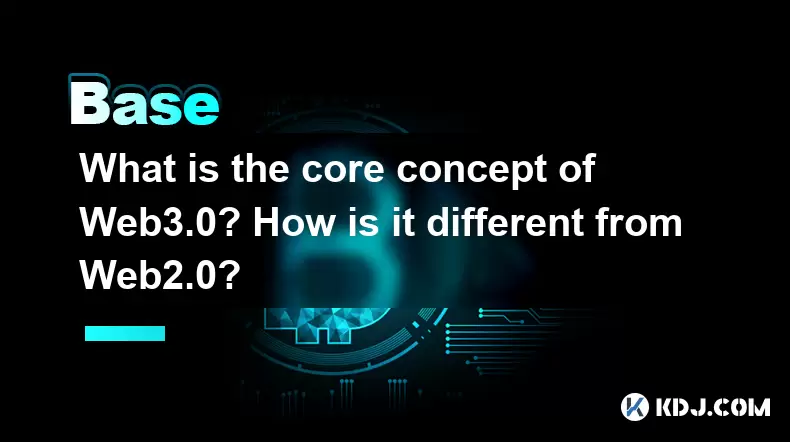
What is the core concept of Web3.0? How is it different from Web2.0?
Jun 21,2025 at 05:56pm
Decentralization as the Foundation of Web3.0The core concept of Web3.0 revolves around decentralization, which fundamentally challenges the centralized architecture of Web2.0. In Web3.0, control and ownership are distributed across a network rather than being held by a central authority or corporation. This is achieved primarily through blockchain techn...
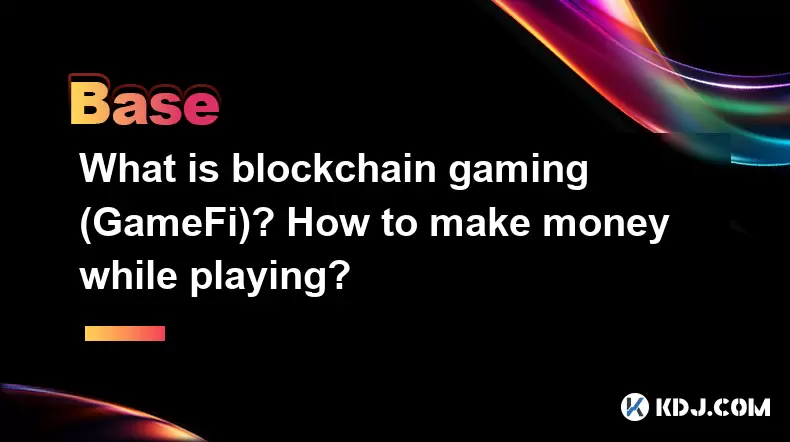
What is blockchain gaming (GameFi)? How to make money while playing?
Jun 20,2025 at 07:56am
Understanding Blockchain Gaming (GameFi)Blockchain gaming, often referred to as GameFi, is a fusion of blockchain technology and video games. It enables players to own in-game assets through non-fungible tokens (NFTs) and earn rewards via cryptocurrencies or token-based systems. Unlike traditional games where items are controlled by centralized develope...
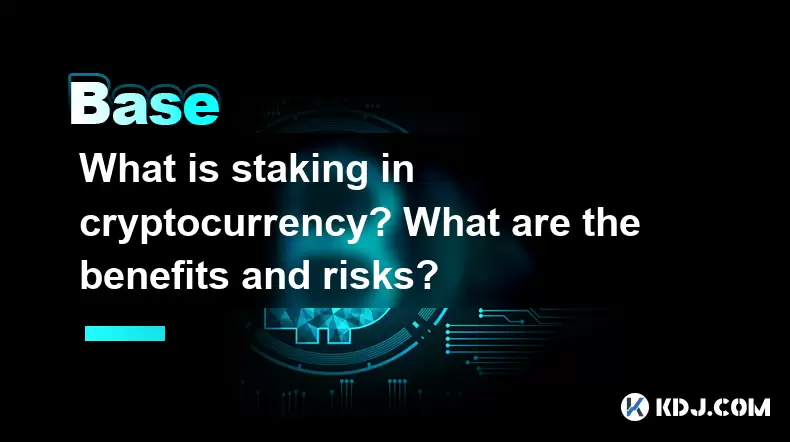
What is staking in cryptocurrency? What are the benefits and risks?
Jun 22,2025 at 10:01am
Understanding the Concept of Staking in CryptocurrencyStaking in cryptocurrency refers to the process of actively participating in transaction validation on a blockchain network that uses a Proof-of-Stake (PoS) consensus mechanism. Instead of miners competing to solve complex mathematical puzzles as in Proof-of-Work systems like Bitcoin, PoS blockchains...

How does the Lightning Network solve Bitcoin congestion? What is the usage process?
Jun 23,2025 at 06:21pm
Understanding Bitcoin Network CongestionBitcoin, as a decentralized digital currency, operates on a blockchain that records every transaction in a public ledger. Each block has a limited size, typically 1 megabyte, which allows for only a certain number of transactions per second (TPS). When the number of transactions increases, the network becomes cong...

What is an oracle in blockchain? How to ensure data authenticity?
Jun 19,2025 at 08:49pm
Understanding the Role of an Oracle in BlockchainIn the context of blockchain technology, an oracle serves as a bridge between the blockchain and external data sources. While blockchains are inherently secure and decentralized, they cannot access real-world information on their own. Oracles enable smart contracts to interact with off-chain data such as ...

What are ICOs and IDOs in cryptocurrency? How to identify high-quality projects?
Jun 22,2025 at 11:49am
Understanding ICOs in CryptocurrencyInitial Coin Offerings (ICOs) are fundraising mechanisms used by cryptocurrency startups to raise capital for their projects. In an ICO, a company creates and sells its own tokens to investors in exchange for established cryptocurrencies like Bitcoin or Ethereum. The process typically involves the release of a whitepa...

What is the core concept of Web3.0? How is it different from Web2.0?
Jun 21,2025 at 05:56pm
Decentralization as the Foundation of Web3.0The core concept of Web3.0 revolves around decentralization, which fundamentally challenges the centralized architecture of Web2.0. In Web3.0, control and ownership are distributed across a network rather than being held by a central authority or corporation. This is achieved primarily through blockchain techn...

What is blockchain gaming (GameFi)? How to make money while playing?
Jun 20,2025 at 07:56am
Understanding Blockchain Gaming (GameFi)Blockchain gaming, often referred to as GameFi, is a fusion of blockchain technology and video games. It enables players to own in-game assets through non-fungible tokens (NFTs) and earn rewards via cryptocurrencies or token-based systems. Unlike traditional games where items are controlled by centralized develope...

What is staking in cryptocurrency? What are the benefits and risks?
Jun 22,2025 at 10:01am
Understanding the Concept of Staking in CryptocurrencyStaking in cryptocurrency refers to the process of actively participating in transaction validation on a blockchain network that uses a Proof-of-Stake (PoS) consensus mechanism. Instead of miners competing to solve complex mathematical puzzles as in Proof-of-Work systems like Bitcoin, PoS blockchains...

How does the Lightning Network solve Bitcoin congestion? What is the usage process?
Jun 23,2025 at 06:21pm
Understanding Bitcoin Network CongestionBitcoin, as a decentralized digital currency, operates on a blockchain that records every transaction in a public ledger. Each block has a limited size, typically 1 megabyte, which allows for only a certain number of transactions per second (TPS). When the number of transactions increases, the network becomes cong...
See all articles

























































































